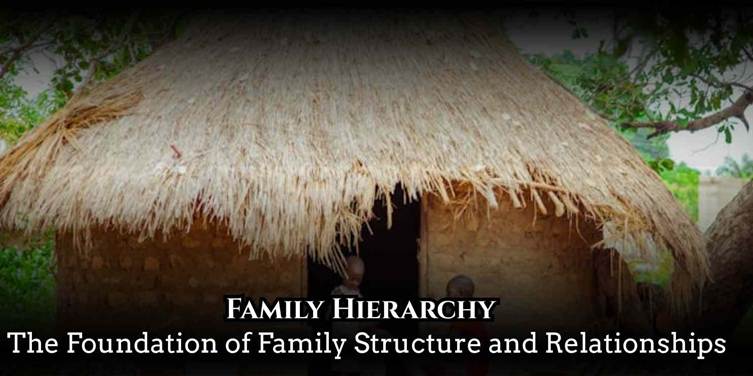Family hierarchy exists in every family, no matter its size or culture, operating within a unique system of order and authority. This system defines how roles, responsibilities, and decisions are distributed among family members. From parents guiding children to grandparents offering wisdom, hierarchy influences the balance of respect, discipline, and communication in daily life. The family structure is built on this hierarchy it shapes how families interact, make decisions, and uphold values.
Table of Contents
This article explores the meaning of family hierarchy, its cultural roots, importance, challenges, and how it continues to evolve in modern society while maintaining harmony and respect among generations.

Understanding Family Hierarchy and Structure
At its core, family hierarchy refers to the order of authority and responsibility within a family. It determines who holds decision-making power, how duties are shared, and how relationships function. In most traditional households, the family roles are well-defined parents lead, children follow, and elders are honored as figures of wisdom and experience.
A healthy family organization depends on understanding these roles. The hierarchy of roles helps maintain order, ensure accountability, and foster cooperation. For example, parents often make decisions regarding finances and discipline, while older siblings assist with younger ones, reflecting a natural sibling hierarchy within the household.
Historical and Cultural Roots of Family Hierarchy
The concept of family hierarchy is as old as human civilization. In ancient societies, families operated under a patriarchal structure, where fathers or male elders had dominant authority. This traditional family system emphasized obedience, respect for elders, and collective responsibility.
In some cultures, a matriarchal family system evolved, where mothers or grandmothers led the household and made key decisions. Regardless of gender, the central idea remained the same: maintaining balance and unity through defined roles.
Different regions still preserve distinct cultural family values:
• In Asian cultures, respect for elders and family discipline are vital.
• In African communities, kinship hierarchy links extended families through shared authority.
• In Western societies, changing norms have brought more equality, reducing strict social hierarchy in family systems.
These cultural variations highlight how deeply family hierarchy in culture influences human relationships and social behavior.
Family Power Dynamics and Decision-Making
Family power dynamics describe how authority and influence flow between members. In many homes, parental authority serves as the foundation of order. Parents enforce rules, set boundaries, and act as role models. However, modern families increasingly promote shared family decision-making, where everyone’s voice especially children’s is valued.
The power structure in family can shift based on various factors such as age, education, and emotional maturity. For example:
• Parents typically lead financial or moral decisions.
• Grandparents influence through experience and traditions.
• Older siblings often guide younger ones in behavior and learning.
A balanced family hierarchy ensures cooperation without suppressing individuality, promoting open family communication patterns that strengthen emotional bonds.
Generational Hierarchy and the Role of Elders
One of the most defining features of family hierarchy is the generational hierarchy—the natural order where elders hold wisdom and younger generations show respect. Elders often serve as advisors, mediators, and storytellers, carrying forward family traditions and cultural family values.
The role of elders extends beyond authority; they embody continuity and moral guidance. In families with strong intergenerational relations, elders nurture the younger ones while feeling valued for their experience. This relationship promotes empathy, discipline, and unity within the family dynamics.
However, as societies modernize, this respect sometimes fades, leading to weakened family relationships and reduced guidance from older generations. Maintaining family leadership that values both tradition and modernity is essential for social harmony.
Family Norms, Responsibilities, and Order
Every family operates under its own set of family norms unwritten rules that guide behavior, communication, and decision-making. These norms uphold the family order by defining family responsibilities and expected behavior.
Examples include:
• Children obeying parents and helping with chores.
• Parents ensuring safety, education, and emotional support.
• Elders offering advice and preserving family unity.
Such systems of authority in family and family discipline help children learn respect and cooperation. Over time, they internalize these lessons, shaping how they behave in society. A well-functioning household authority maintains balance between love and responsibility, preventing chaos while nurturing trust.

Changing Family Roles in Modern Society
In today’s fast-paced world, changing family roles have reshaped the traditional hierarchy. Globalization, urbanization, and gender equality have led to shared decision-making and more democratic family systems. The old patriarchal structure has evolved into models that emphasize partnership, emotional intelligence, and open dialogue.
Now, many families value collaboration over command, fostering social roles in family where everyone contributes equally. Hierarchy in parenting has become less rigid parents guide rather than dictate, and children are encouraged to express opinions. These changes have also improved family communication patterns, making modern families more adaptable and understanding.
Despite this evolution, maintaining respect for family influence and heritage remains vital. A balance between freedom and responsibility helps preserve harmony across generations.
Challenges in Modern Family Hierarchy
Modern families face unique challenges in sustaining family hierarchy. The shift from extended to nuclear households often weakens kinship hierarchy and intergenerational bonds. Technology and individualism can reduce communication, affecting the emotional depth of family relationships.
Moreover, conflicting cultural expectations may cause tension some members prefer traditional authority, while others value independence. Successful families navigate these differences through:
• Open and empathetic communication.
• Equal participation in decision-making.
• Preserving traditions while adapting to new realities.
A flexible yet respectful family hierarchy ensures that each member feels valued and heard.
Conclusion
In essence, family hierarchy forms the backbone of every household it organizes roles, nurtures respect, and keeps relationships in harmony. From family power dynamics to changing family roles, this structure evolves with society while preserving timeless values like respect, love, and cooperation. When maintained with fairness and empathy, family hierarchy becomes more than a system of authority it becomes a bridge connecting generations and ensuring emotional stability. To build stronger families, we must embrace both tradition and change, honoring the wisdom of the past while empowering voices of the present.